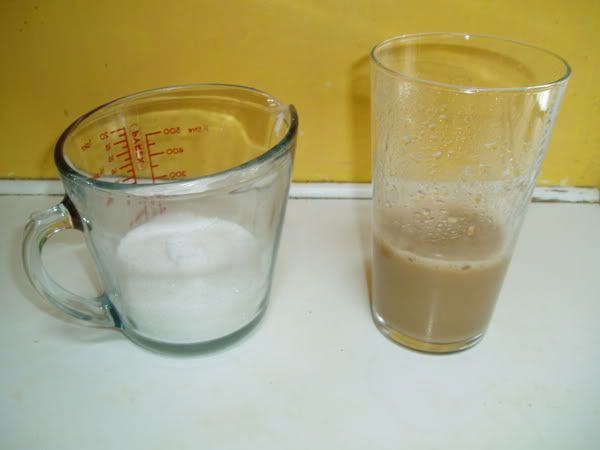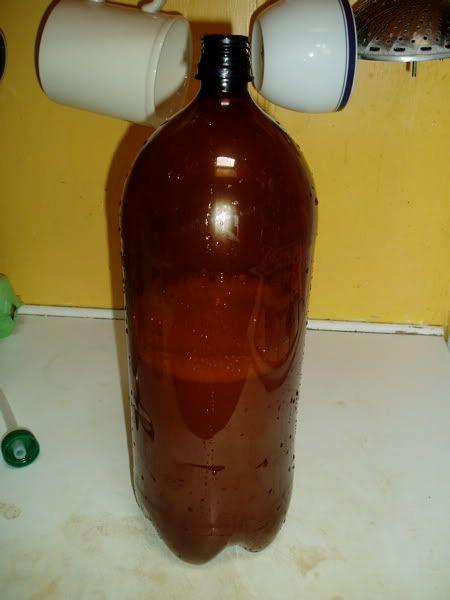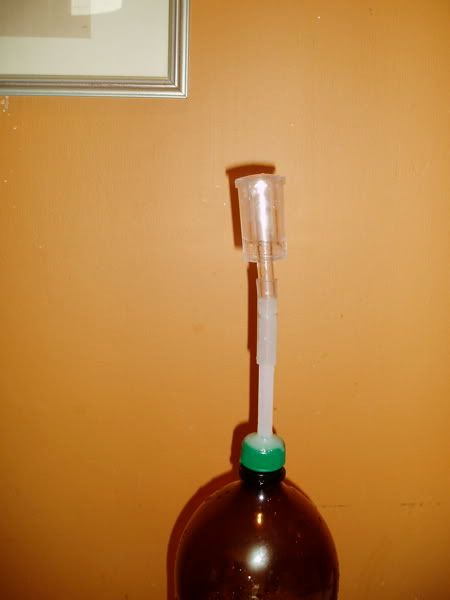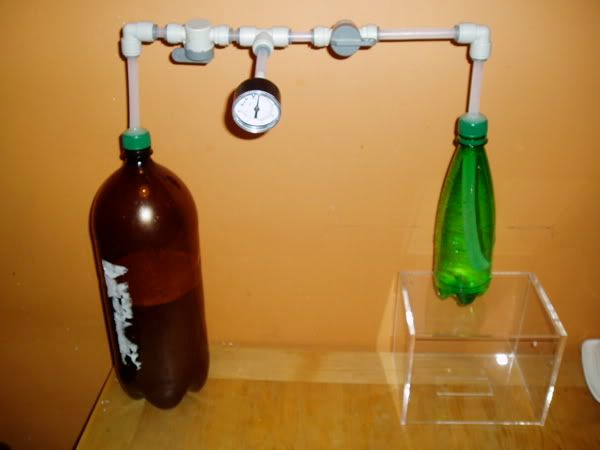Basically it's a way of maintaining pressure in a king keg without using a CO2 cylinder. You carbonate the beer as usual by adding sugar. When you start drinking it, you mix water, sugar and yeast together in a separate container, and use the CO2 from the fermentation to keep the keg pressurized. I borrowed the idea from our friends who like to grow strange plants in their wardrobes. They use this method to provide a regular supply of CO2 to the plants.
Onto the pics. In the jug is 150g of sugar. On the right is some yeasty dregs collected from the bottom of a finished keg.

Mixed together and add warm water to the halfway mark. (It's a three-litre bottle.)

A length of 3/8" beerline is attached to the bottle cap with Araldite. I put the airlock on just to make sure that CO2 was being produced. Fermentation began in a couple of hours.

When the bottle was full of CO2 and all the air had been displaced, I hooked it up and let it pressurize. Hopefully you can work out from the picture what happens where -- apologies for the spaghetti junction. At the moment I've got two taps and one pressure gauge, but two pressure gauges and one tap would be more sensible.

The bottle pressurizes very rapidly. At the moment it's at about 20psi; I can't tell exactly because it's gone off the top of the scale. (A heftier pressure gauge is on its way from ebay.) Hopefully the pressure won't go too high, though. Ideally I want to produce a nice slow fermentation that keeps pace with my drinking. Keeping the bottle inside the kegerator at 13°C should slow it down, as should the build-up of CO2 in the sugar mix.
Anyway, it's been going for a couple of days now, and so far so good. Progress reports to come. As to the advantages of this system over a gas cylinder ... let me get back to you.


